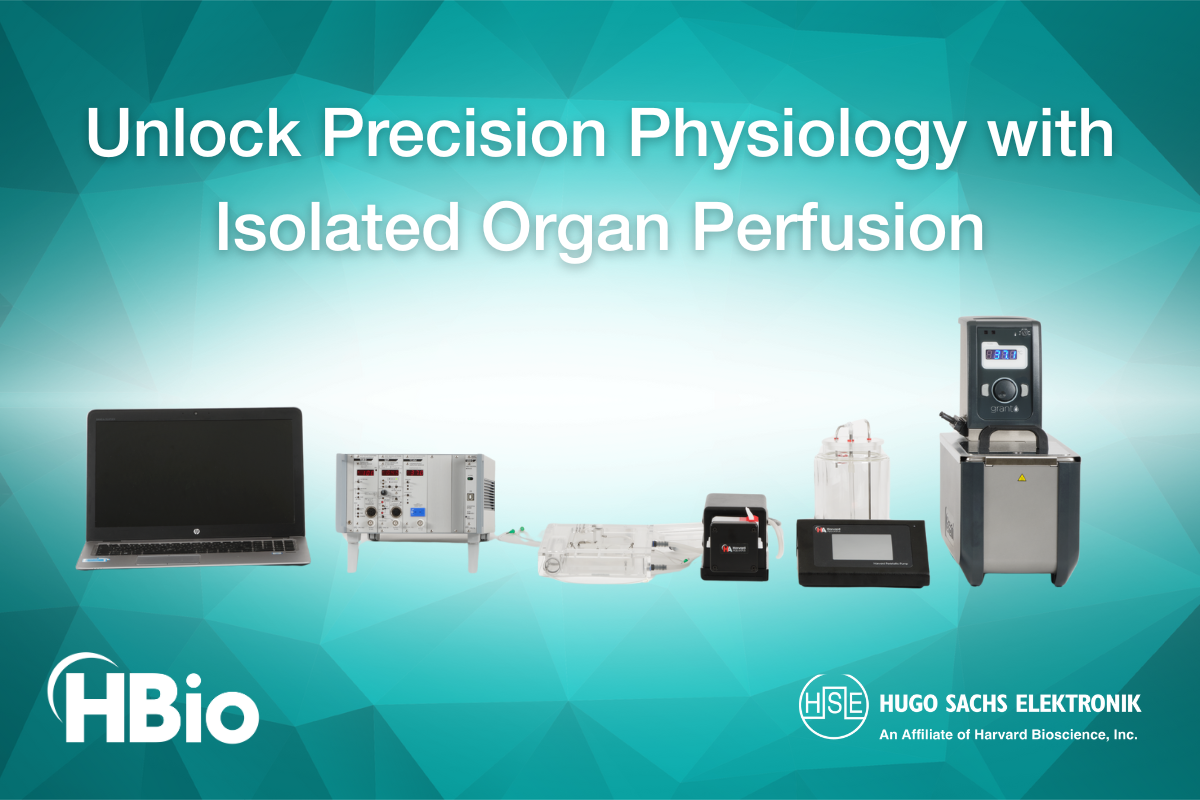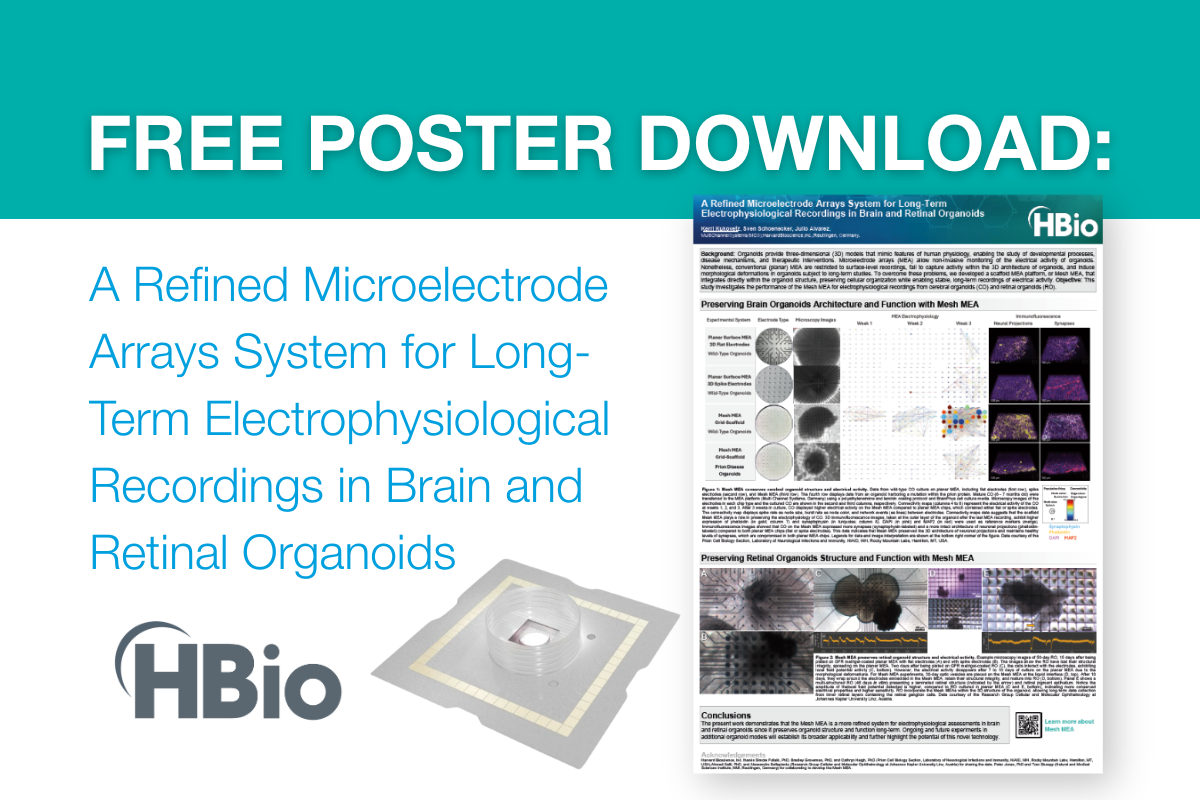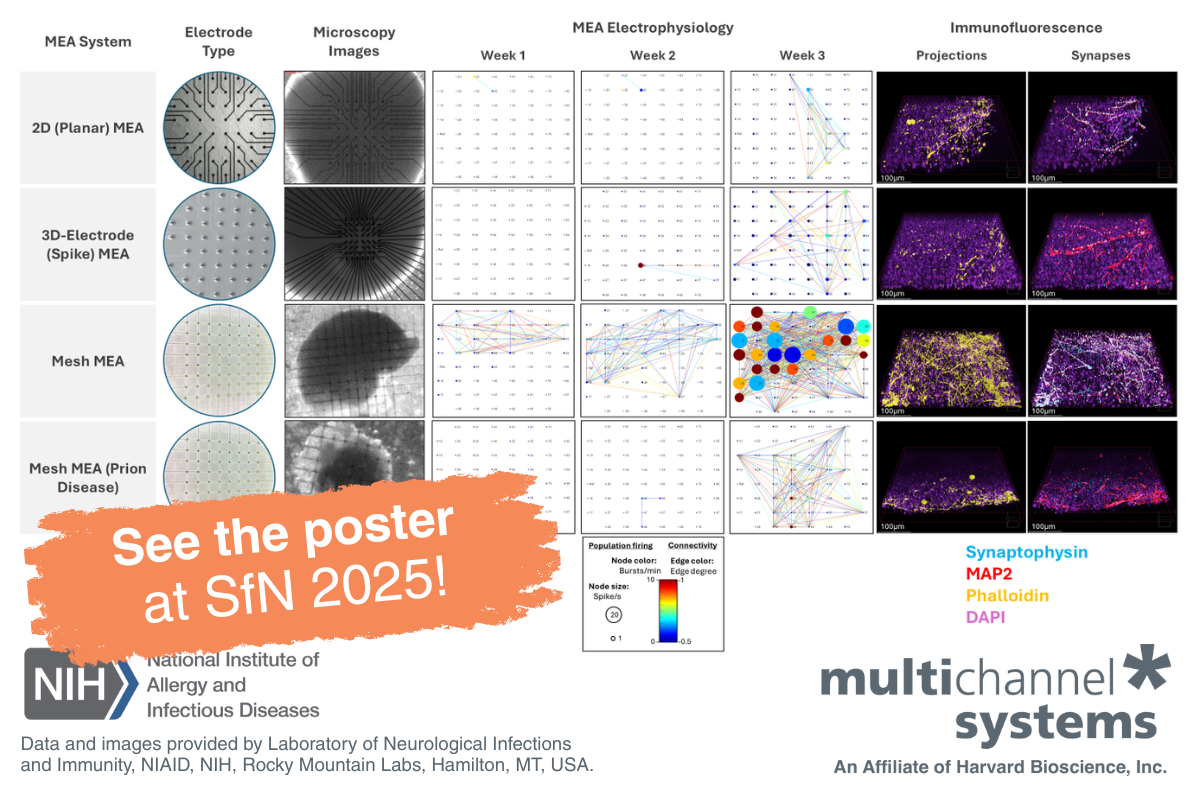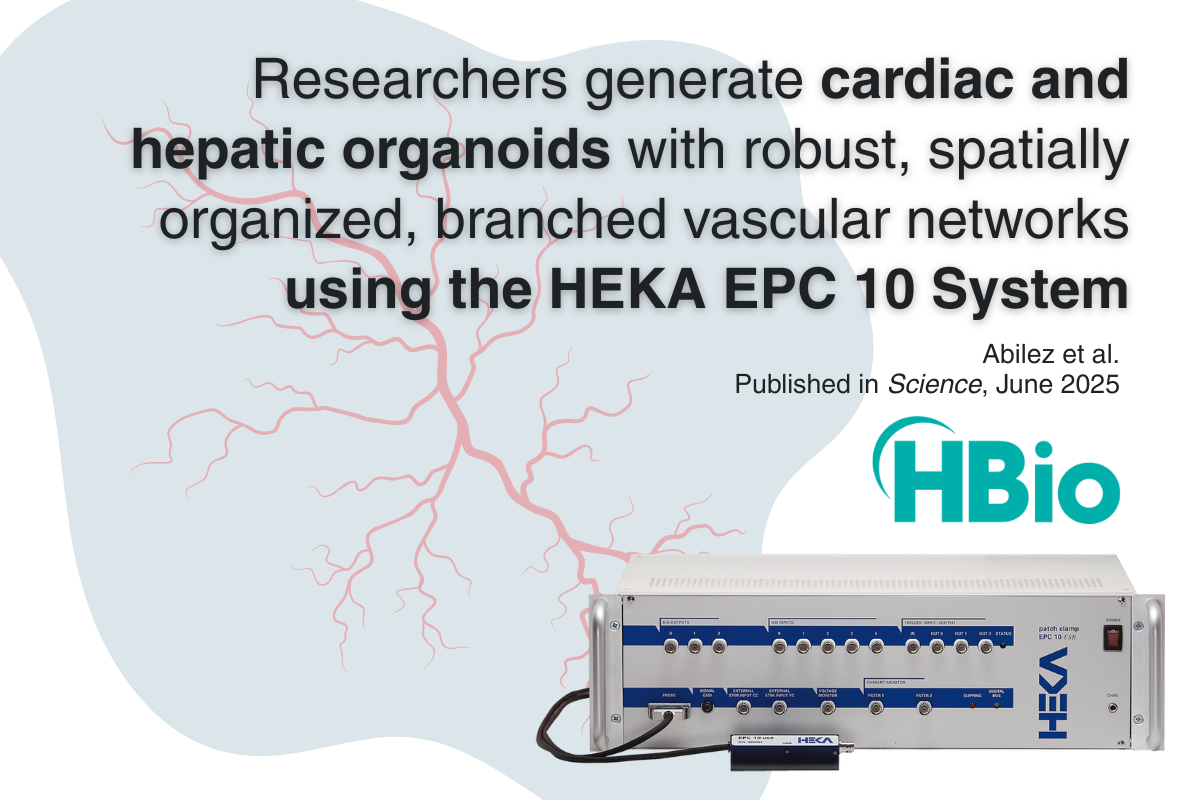
Unlock Precision Physiology Research with Hugo Sachs Elektronik’s Isolated Organ Systems
Unlock new levels of control and precision in your cardiovascular, pulmonary, or abdominal organ research with Hugo Sachs Elektronik’s modular isolated organ perfusion systems. Designed for a wide range of applications, these systems offer unmatched flexibility, advanced monitoring, and seamless data integration to meet the needs of today’s physiologists and translational researchers.
Isolated organ perfusion has long been a cornerstone of physiological and pharmacological research — enabling scientists to study organs in a controlled environment while preserving their native function. Isolated organs still play a large role in research between cell-based studies, organoids, and the whole animal. If you’re a researcher investigating cardiac, pulmonary, or abdominal organ function, Hugo Sachs Elektronik (HSE) offers an unparalleled portfolio of isolated organ systems designed to enhance your experimental precision, flexibility, and data quality.
Why Choose Isolated Organ Perfusion?
Studying an isolated organ provides unique advantages: you can manipulate perfusion conditions precisely, apply targeted pharmacological agents, and record high-fidelity physiological responses free from systemic influences. This level of control is essential for uncovering fundamental mechanisms, evaluating drug effects, and modeling disease states.
Hugo Sachs Elektronik has been a trusted name in organ perfusion for decades. Their modular systems are engineered to meet the diverse needs of modern researchers — from small rodents to large animal models — with fully customizable setups that evolve alongside your experimental goals.
Explore the Hugo Sachs Elektronik Isolated Organ Portfolio
Isolated Heart Perfusion (IH Series)
The IH series remains the gold standard for cardiac physiology studies. Whether you’re performing Langendorff or Working Heart preparations up to biventricular perfusions for rat and rabbit hearts, these systems provide:
- Versatility across species: From mice and rats to minipigs, the IH series accommodates a wide range of sizes with modular components designed for each model.
- Advanced monitoring: Integrate sensors for pressure, flow, temperature, electrocardiogram data, and monophasic action potentials enabling comprehensive hemodynamic profiling.
- Customizable modules: Add oxygenators, heaters, perfusate reservoirs, or recirculation loops tailored to your study’s demands.
- Data acquisition, visualization and analysis:
Ponemah Software: tailored to acquire, visualize, and report a wide range of physiologic parameters. Dedicated analysis modules for LVP, Blood Pressure, Flow, ECG, Respiration etc.
This flexibility allows for in-depth investigations of myocardial ischemia, drug cardiotoxicity, or cardiac mechanics under controlled, reproducible conditions.
Isolated heart publication spotlight
Reperfusion-induced ventricular arrhythmias remain a critical challenge in cardiac recovery following ischemic injury, complicating patient outcomes. This study uses an isolated rat heart model to reveal how direct adrenaline administration dramatically increases the risk of dangerous ventricular tachyarrhythmias, particularly after prolonged ischemia. The findings underscore the importance of carefully managing adrenaline exposure during reperfusion, providing valuable insights that could inform safer therapeutic strategies in cardiac care and transplantation research.
The isolated, perfused working heart preparation of the mouse—Advantages and pitfalls
For researchers studying cardiac function in small animals, the isolated working heart model is a game-changer—and this recent review in Acta Physiologica shows why. Unlike the classic Langendorff system, this setup mimics real-life cardiac workload by perfusing the heart through the left atrium, allowing for more accurate measurements of stroke volume, cardiac output, and oxygen consumption. The authors not only detail the physiological advantages of the model but also provide practical guidance to overcome its technical challenges—making this a must-read for anyone looking to elevate their in vitro heart research.
Isolated Lung Perfusion (IPL Series)
Pulmonary research benefits from HSE’s IPL systems, engineered for precise ventilation and perfusion studies. Key features include:
- Respiratory mechanics monitoring: Measure lung compliance, airway resistance, and gas exchange in real time. The systems allow positive and negative (sub atmospheric) ventilation to compare the clinical situation with the physiological reality in normal breathing.
- Ventilation control: Adjustable tidal volumes, respiratory pressures and breathing rates simulate physiological or pathological conditions.
- Modularity: Add or remove components like humidifiers or oxygenators based on your experimental design.
Ideal for studying lung injury models, drug delivery, transplant physiology, or toxicology the IPL portfolio supports translational research from bench to bedside.
Isolated lung publication spotlight
TRPV4 channels are essential for alveolar epithelial barrier function as protection from lung edema
Maintaining a robust alveolar epithelial barrier is crucial for preventing lung edema, a serious complication in conditions like acute lung injury and transplantation. This compelling study reveals that TRPV4 ion channels play an essential role in preserving this barrier’s integrity. Using TRPV4 knockout mice, researchers uncovered that loss of TRPV4 significantly increases susceptibility to ischemia/reperfusion-induced lung edema, accompanied by decreased levels of critical proteins like aquaporin-5 and surfactant protein C. These insights position TRPV4 not only as a key molecular guardian of lung function but also as a promising therapeutic target to improve outcomes in lung injury and transplant settings.
Lung transplantation faces persistent challenges related to graft injury and preservation, but a recent study offers an exciting new approach to tackle these hurdles. By perfusing lungs at a subnormothermic temperature of 28°C—cooler than the typical normothermic conditions—researchers demonstrated improved graft preservation and viability in a rat model. This innovative strategy slows cellular metabolism, reducing tissue stress and injury during the critical ex vivo period, and holds real potential to enhance transplant success and expand donor lung utilization.
Abdominal Organ Perfusion Systems
Though less prominent online, HSE’s modular designs extend to abdominal organs such as kidneys, liver, intestines, and spleen from mice up to large animals like pigs or sheep. These systems uphold the same principles of flexibility and precise control, enabling researchers to:
- Investigate organ-specific metabolism and pharmacokinetics
- Study ischemia-reperfusion injury or transplant viability
- Customize perfusion parameters to mimic physiological conditions
As in the other applications, these setups aim to perfuse the isolated organs as near as possible to the physiological in vivo conditions and optimal temperature conditions. In addition to drug testing, toxicology, tissue engineering, biochemical tests, these systems are also used for organ transplantation studies.
Abdominal Organ Perfusion Publication Spotlight
A Small Animal Model of Ex Vivo Normothermic Liver Perfusion
Preserving liver function outside the body is a critical hurdle in transplantation, and this study delivers a powerful new tool to tackle it. The researchers developed a reproducible, cost-effective rat model for normothermic ex vivo liver perfusion (NEVLP) that keeps the liver at body temperature, significantly improving preservation compared to traditional cold storage. By demonstrating that adding pegylated-catalase to the perfusate reduces injury from oxidative stress, this platform opens exciting avenues for testing protective additives and refining strategies to enhance graft quality before transplantation.
A protocol for rat kidney normothermic machine perfusion and subsequent transplantation
Kidney transplantation research has long struggled with the trade-off between costly large-animal models and limited human studies—until now. This pioneering study introduces the first small-animal (rat) model for normothermic machine perfusion (NMP) followed by transplantation, offering a scalable and cost-effective platform that closely mimics physiological conditions. By maintaining kidneys at body temperature during perfusion, this model not only improves organ preservation and function but also opens exciting opportunities to optimize perfusion protocols, test novel additives, and ultimately expand the donor pool while reducing graft failure.
Integrated Data Acquisition and Analysis
HSE isolated organ systems seamlessly integrate with DSI’s Ponemah software for advanced signal conditioning and acquisition tools —including HSE´s PLUGSYS modular amplifier system. This integration ensures:
- High-resolution, low-noise data capture suitable for rigorous physiological measurements.
- Can be combined with Ponemah ACQ‑7700 platform for GLP compliance.
- Sophisticated analysis software for pressure-volume loops, respiratory metrics, and more. Dedicated analysis modules for LVP, Blood Pressure, Flow, ECG, Respiration and others.
This integrated workflow streamlines your research process, from data collection to insightful analysis.
Practical Tips for Selecting Your System
Choosing the right isolated organ system can be straightforward if you consider:
- Your target organ and species: Mouse heart studies demand different configurations than pig lung experiments.
- Core system selection: IH for heart, IPL for lungs, or specialized setups for abdominal organs.
- Necessary accessories: Perfusate reservoirs, oxygenators, heating/cooling elements, sensors.
- Consulting HSE experts: Use the detailed pre-order checklists on the HSE website and speak with application specialists to tailor the system for your research needs.
Why Invest in Hugo Sachs Elektronik?
- Proven modularity and scalability: Your system grows with your research needs.
- Global expert support: Benefit from decades of experience and responsive technical assistance.
- Seamless integration: Connect your perfusion system with cutting-edge data acquisition platforms.
- Reproducibility: Achieve consistent, high-quality results critical for publication and regulatory submission.
Ready to Elevate Your Research?
Discover the full capabilities of Hugo Sachs Elektronik’s isolated organ portfolio and how these systems can empower your cardiovascular, pulmonary, or abdominal organ studies. Connect with our expert team for personalized support today!




